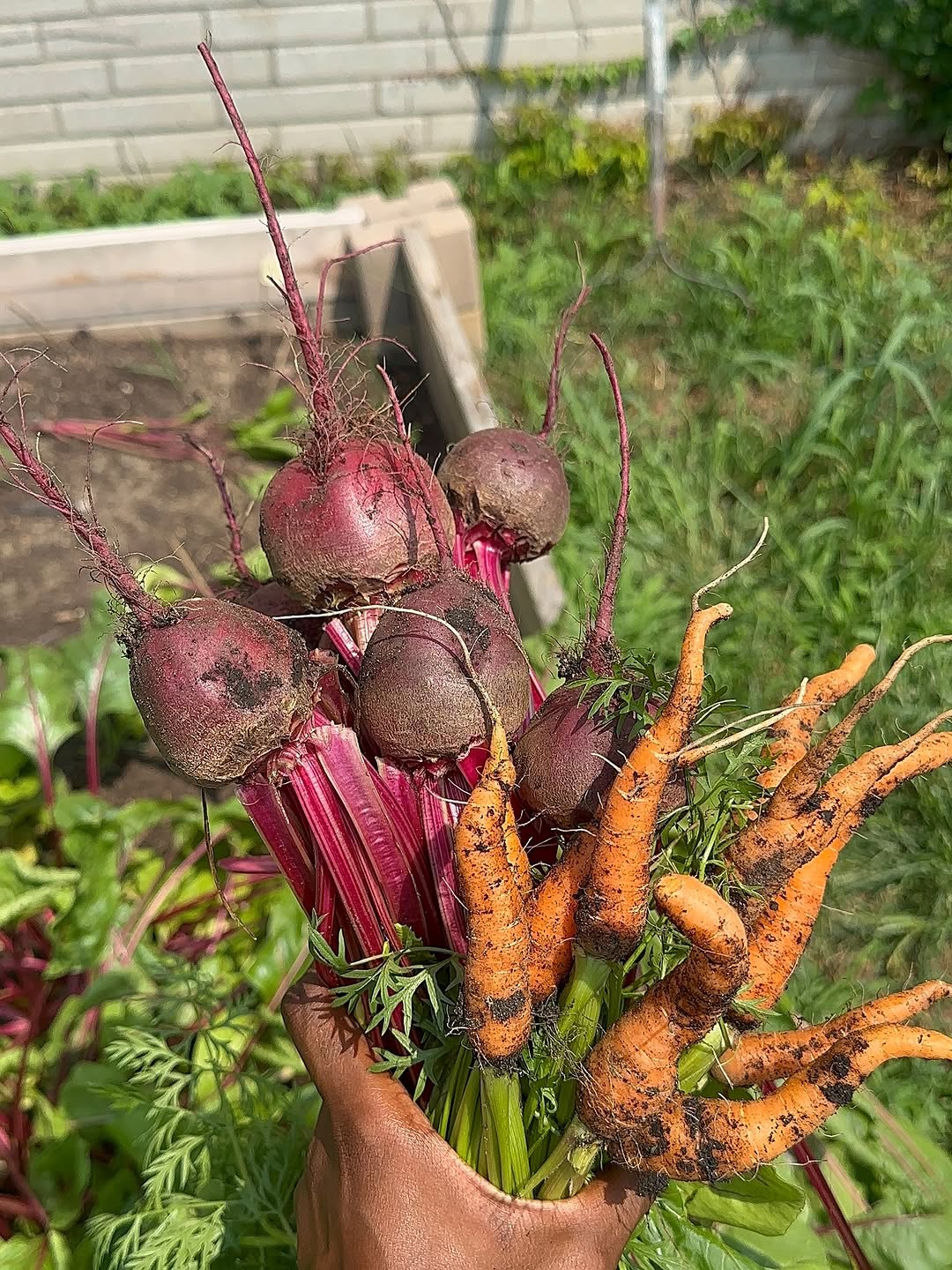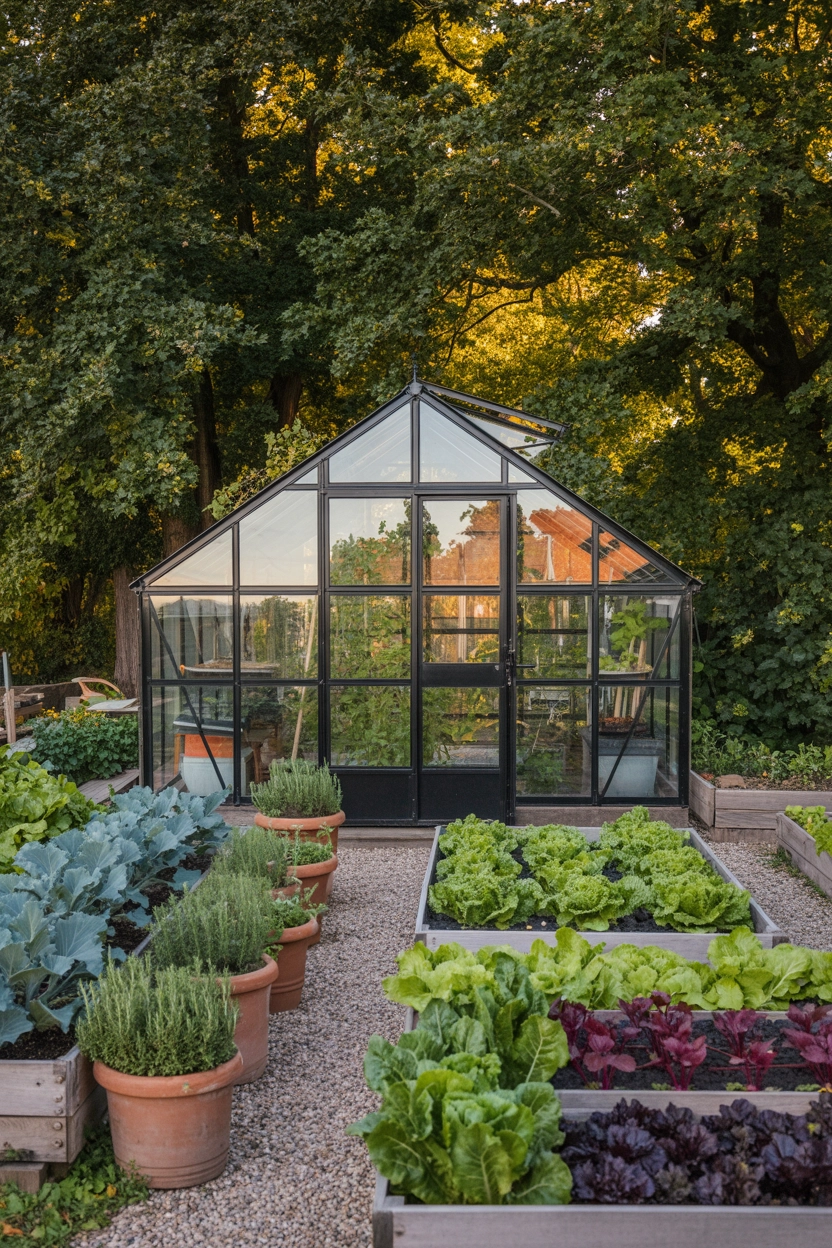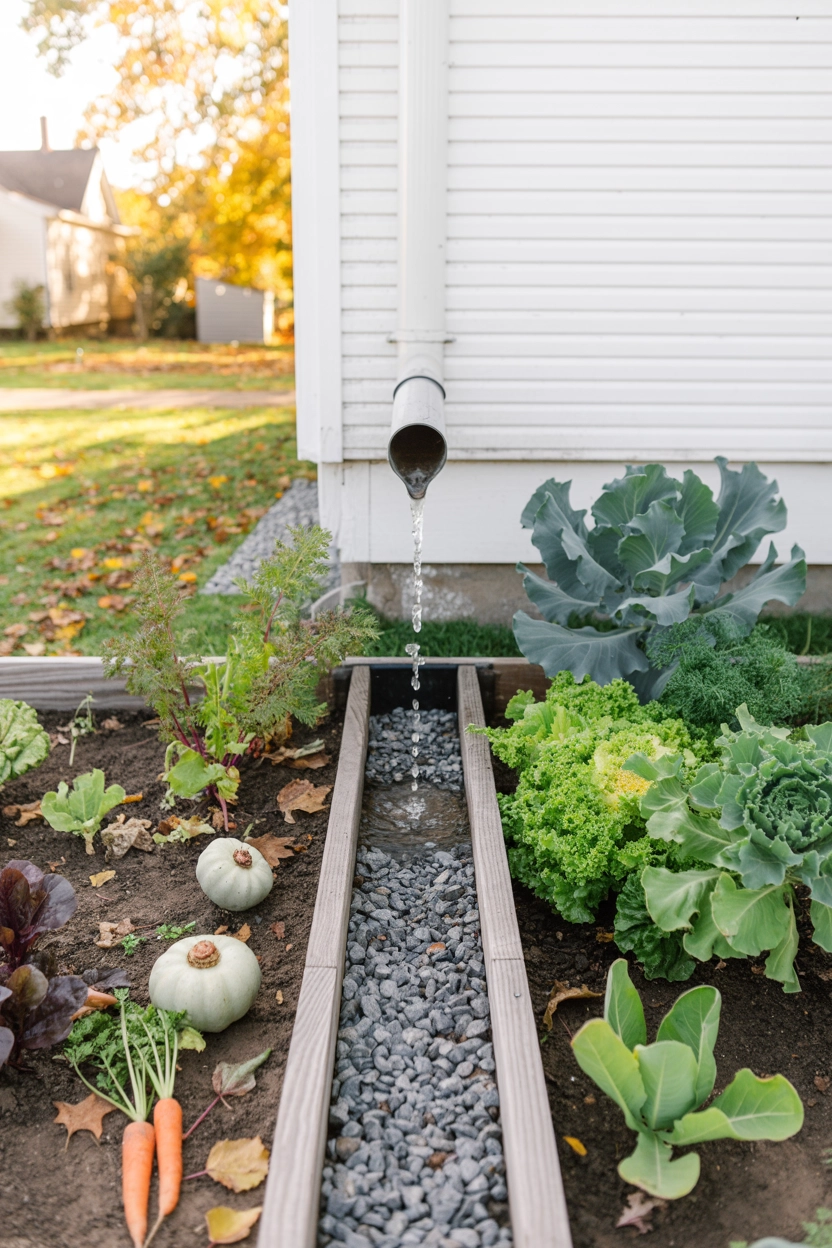Let’s be honest—fall gardening doesn’t exactly get the same Instagram spotlight as spring blooms or summer tomatoes. But while everyone’s busy turning their coffee into dessert, I’m out here planting veggies that actually pull their weight. Fall is basically the underdog season of gardening: fewer pests, cooler temps, and a whole lineup of plants that thrive when others tap out.
Here’s the kicker: some vegetables actually taste better after a light frost. Nature’s version of seasoning, if you will. Plus, your soil is still warm from summer, which means seeds germinate faster than you can say “Where did August go?”
So grab your gloves and let’s plant some underappreciated fall heroes—because your garden deserves more than just mums and ornamental cabbage. (Seriously, who decided cabbage was decorative?)
1. Kale: The Drama Queen That Loves the Cold
 Source: The Novice Homestead
PIN IT
Source: The Novice Homestead
PIN IT
Kale is that overachieving friend who’s annoyingly good at everything—and yes, it gets even sweeter when the temperature drops. Literally. A light frost causes kale to convert starches into sugars, making it less bitter and more flavorful than the stuff you bought in July and pretended to like.
It’s also wildly low-maintenance. I’ve planted it, ignored it for weeks, and it still showed up like, “I’m fine. Thanks for nothing.” You can direct sow seeds about 6 to 8 weeks before your first expected frost, and it’ll keep giving you leaves well into early winter.
Pro tip: go for varieties like ‘Winterbor’ or ‘Red Russian’—they’re as hardy as they sound. I like mixing a few types just for the drama in the garden bed. Plus, nothing screams “I grow my own food” quite like a bouquet of frilly, frost-kissed kale.
2. Carrots: Sweet, Crunchy, and Low-Maintenance—Like the Ideal Roommate
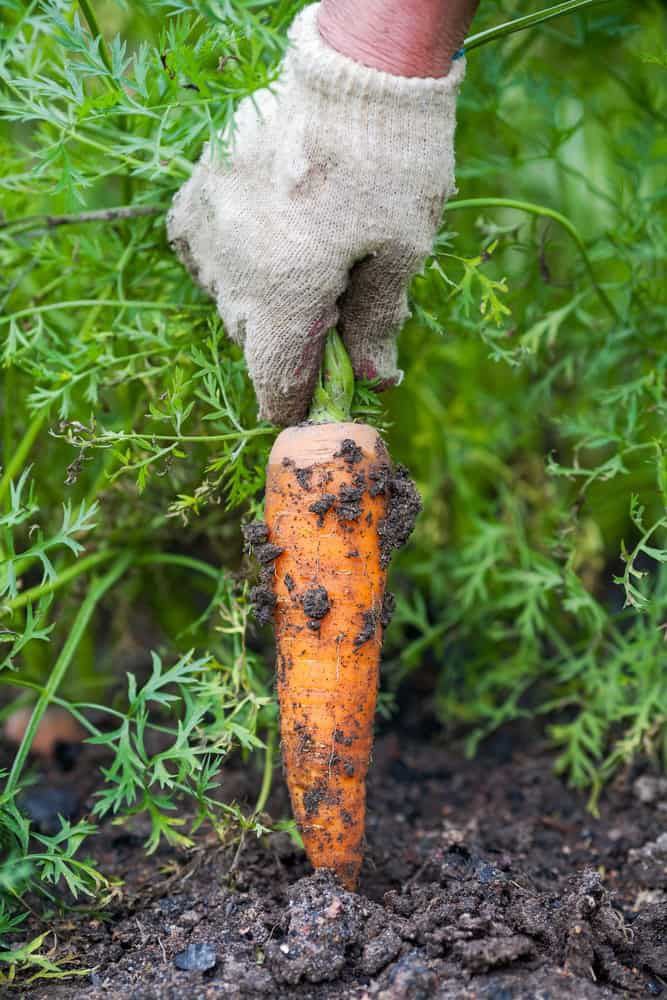 Source: Rural Sprout
PIN IT
Source: Rural Sprout
PIN IT
If you’ve ever bitten into a fall-harvested carrot and thought, “Wait, this is what carrots are supposed to taste like?”—congrats, your taste buds just met cold-sweetened magic. Cooler weather signals the carrot to convert starch into sugar, making fall carrots far sweeter than their summer counterparts.
They don’t ask for much: just loose, rock-free soil and a little patience. I usually sow mine in late summer and forget about them until the tops start to look like tiny green fireworks. Just make sure to thin them—unless you enjoy harvesting mutant root tangles.
And hey, if your fall garden doesn’t gift you perfect grocery-store-shaped carrots, remember: flavor over aesthetics. Ugly carrots are still carrots, and they’ve got personality.
3. Spinach: The Overachiever That Grows Faster Than Gossip
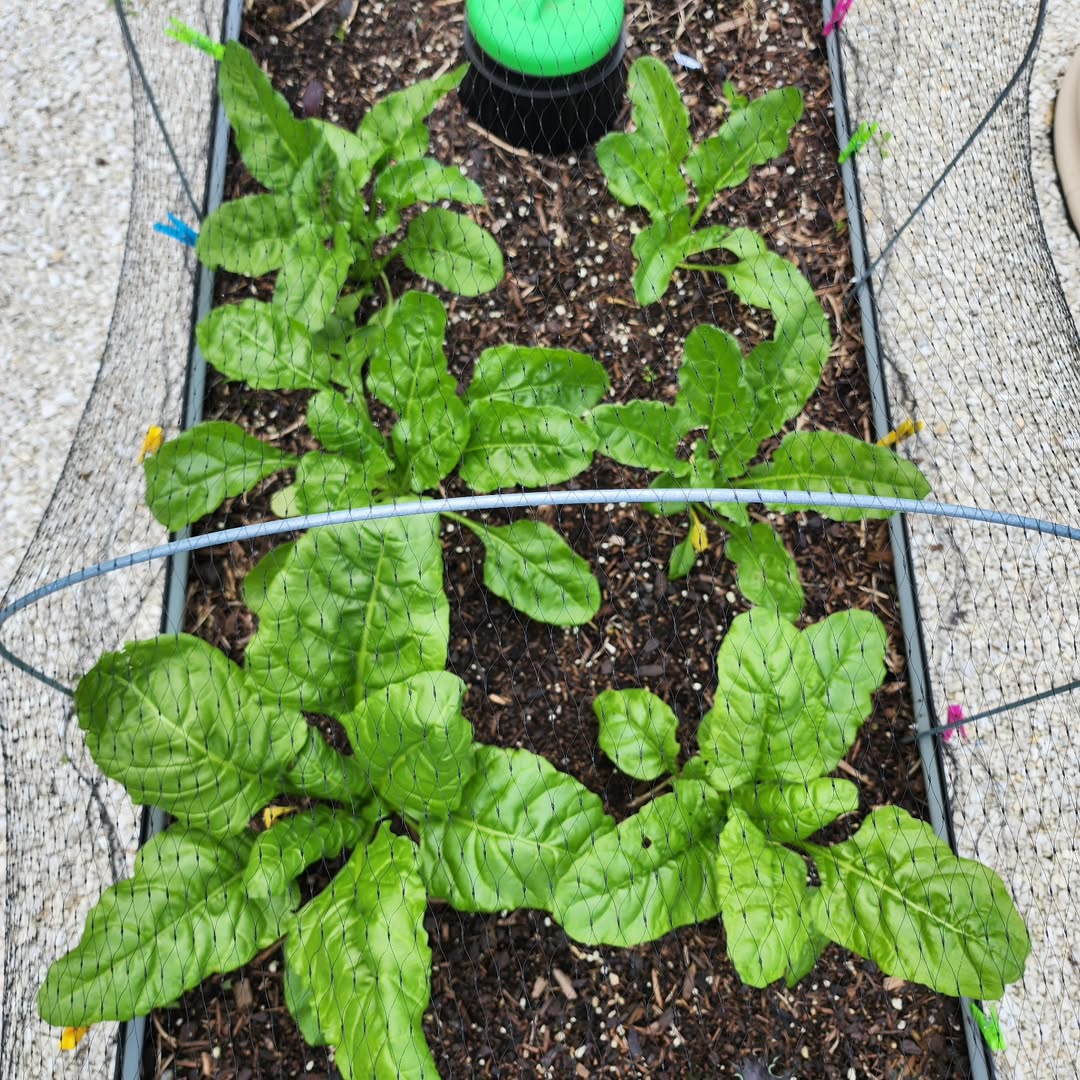 Source: @jimnzgarden
PIN IT
Source: @jimnzgarden
PIN IT
Spinach doesn’t wait for you to be ready—it’s already growing while you’re still deciding between compost or mulch. Cooler temps keep spinach from bolting (that’s garden-speak for “freaking out and going to seed”), so it sticks around longer in the fall. And yes, it grows ridiculously fast.
Sow seeds directly about 6–8 weeks before your first frost. Use a row cover if temps dip too low—spinach likes the cold, but not arctic vacation cold. I once harvested baby leaves in under three weeks, which is faster than my laundry pile disappears.
Spinach is also packed with iron, fiber, and smugness. Every time I add it to a smoothie, I feel like I’ve made a responsible adult choice. Even if the rest of my diet is… questionable.
4. Radishes: For When You Need Instant Gardening Gratification
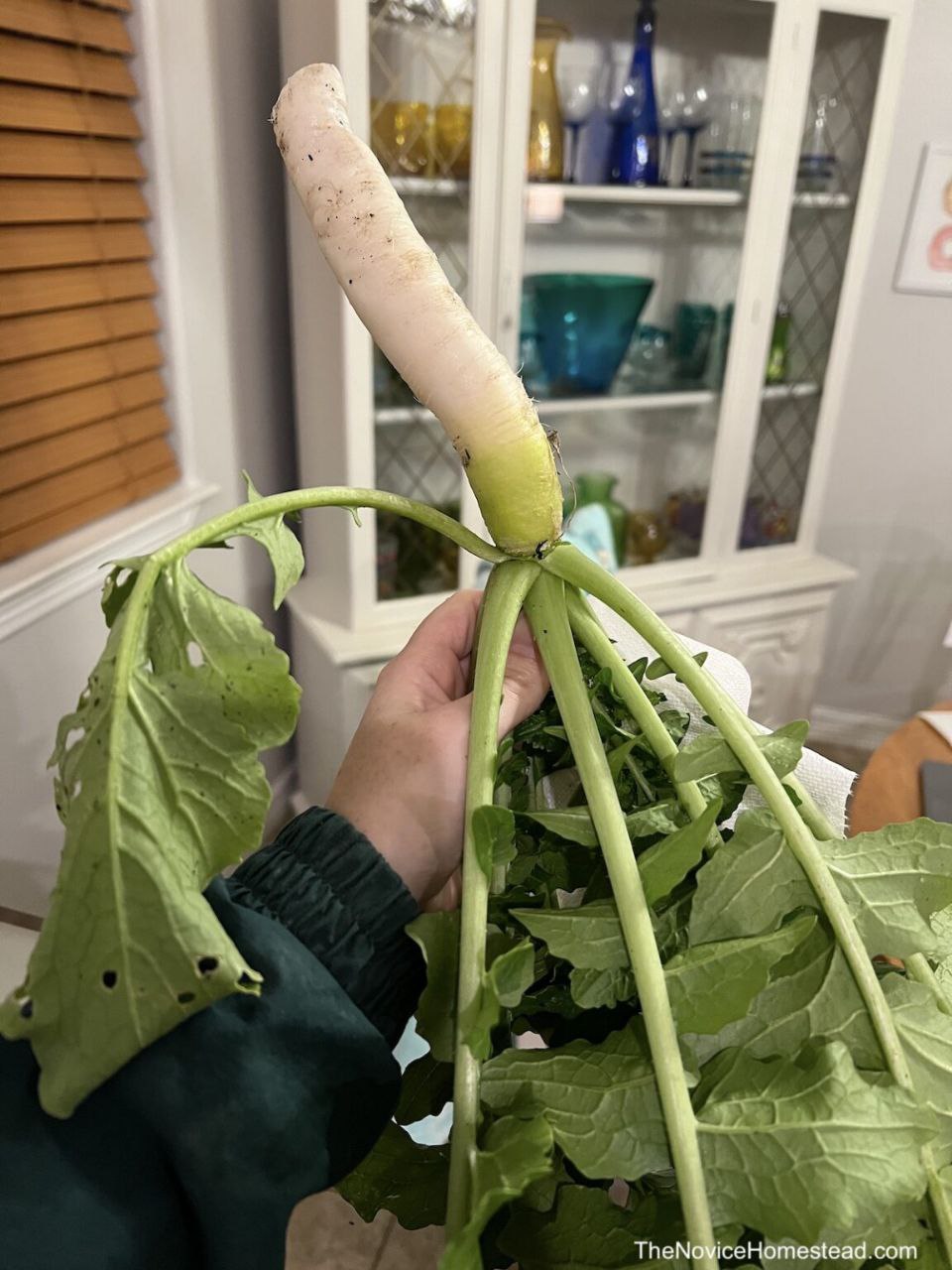 Source: The Novice Homestead
PIN IT
Source: The Novice Homestead
PIN IT
Let’s talk commitment issues—radishes don’t have them. These guys go from seed to harvest in as little as three weeks. That’s faster than some people return your texts.
Perfect for impatient gardeners (hi, me), radishes thrive in the crisp fall air. The cooler weather prevents them from becoming pithy and spicy, so you get that satisfying crunch without the mouth burn. Plant them in well-draining soil, space them out, and don’t blink—seriously, they grow fast.
Go for varieties like ‘Cherry Belle’ or ‘French Breakfast’ for flavor and flair. I personally like planting them in between rows of slower-growing crops—nature’s way of double-dipping.
Bonus: radish greens are edible too. Just sauté them in olive oil and pretend you’re the kind of person who wastes nothing. It’s a vibe.
5. Broccoli: The Mini Tree That’s Cooler Than It Looks
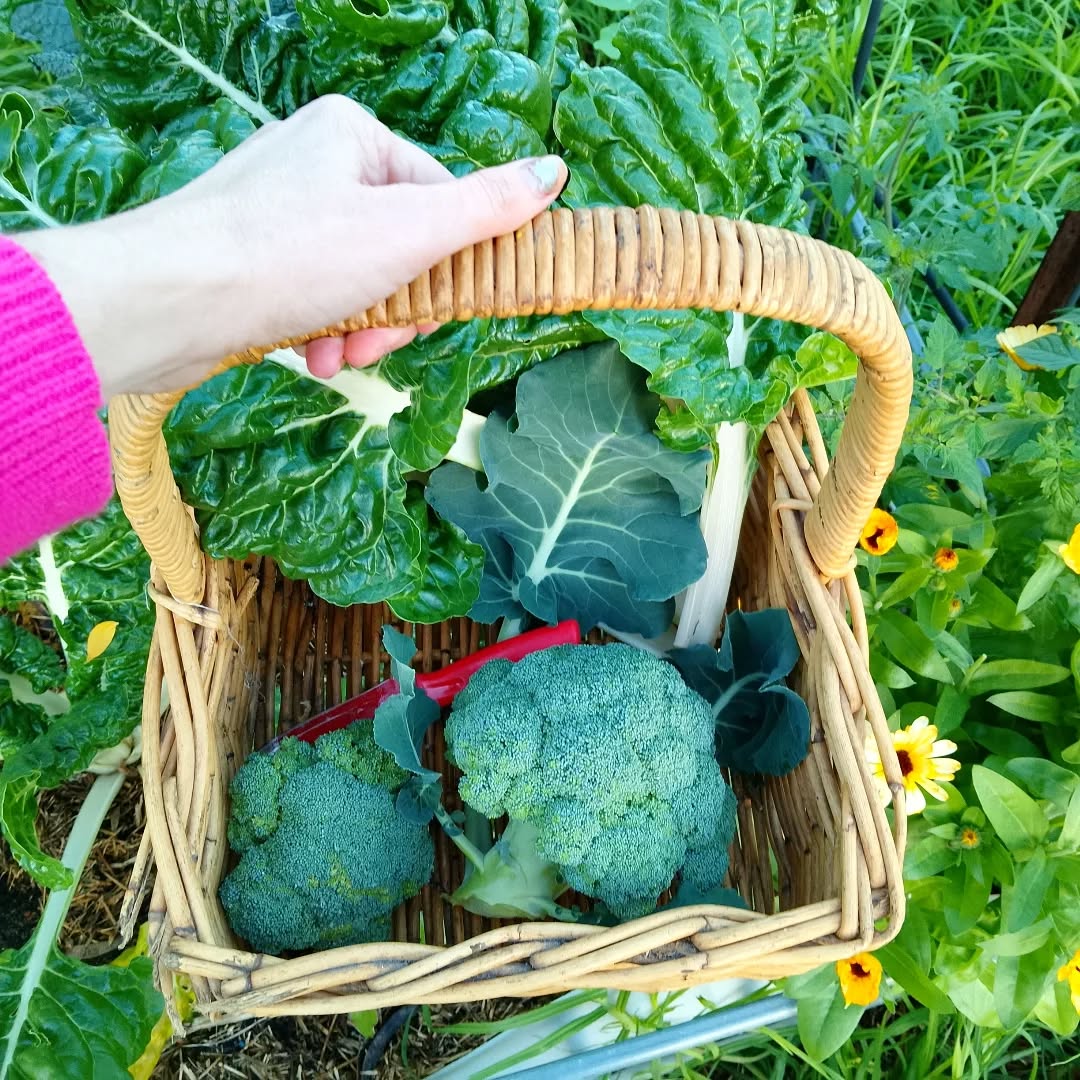 Source: @nadsthriftypatch
PIN IT
Source: @nadsthriftypatch
PIN IT
I used to think broccoli was just the soggy side dish from childhood nightmares. Then I grew it in fall, and let’s just say—we made peace. Cooler temps give you tighter heads and better flavor, and the pests? Gone with the summer heat. Finally.
Start broccoli indoors in late summer or direct sow if you’ve got time before frost. They like rich soil and consistent moisture—don’t slack or they’ll sulk. Watch for the central head to form, then harvest before it flowers. That yellow bloom? It’s broccoli giving up on life.
I love varieties like ‘De Cicco’ because it keeps sending out little side shoots even after the main harvest. More broccoli, fewer trips to the store. And the best part? Roasting it with garlic makes you forget it was ever “meh.”
6. Swiss Chard: Rainbow Stalks That Work Hard and Look Good Doing It
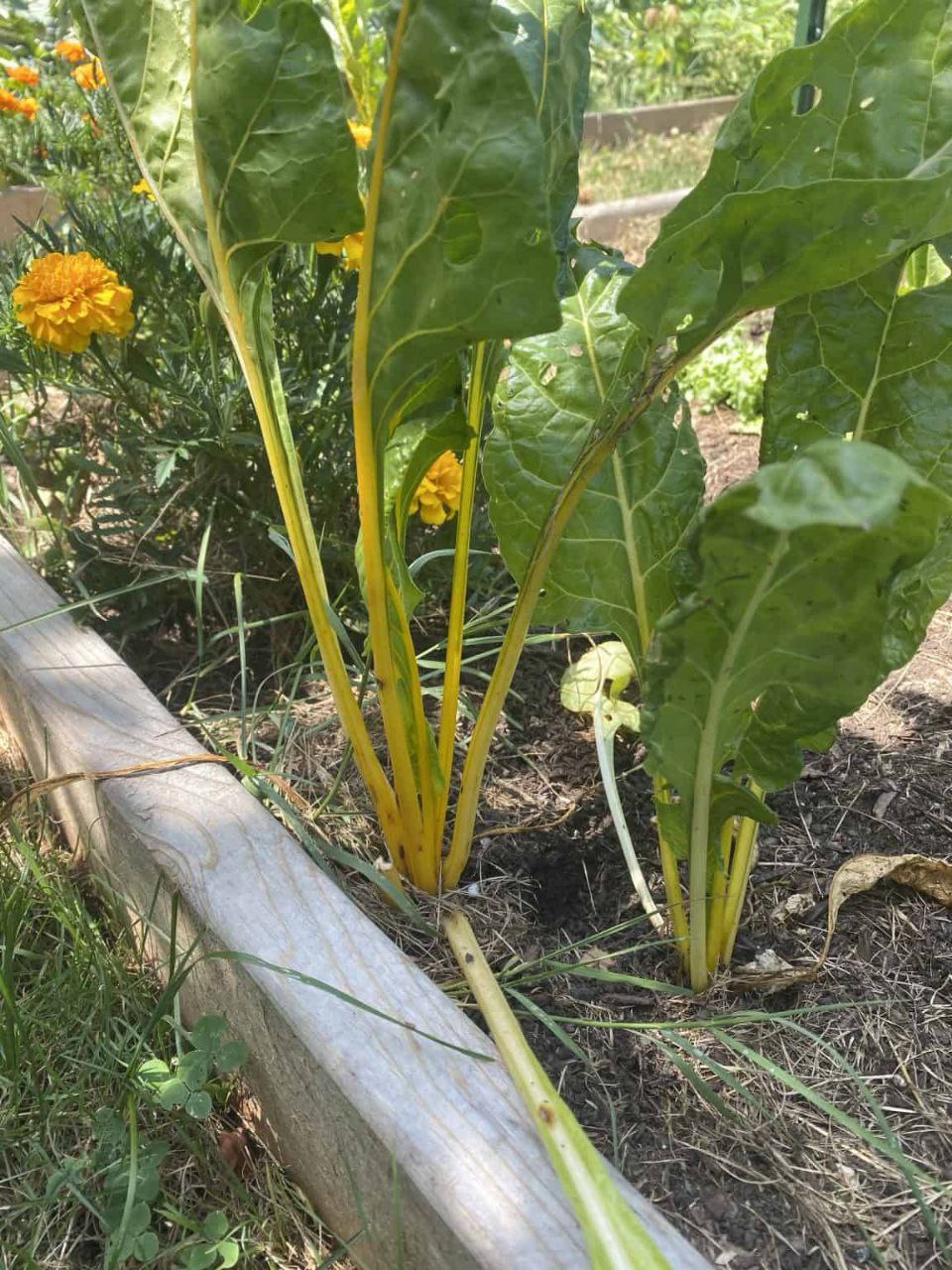 Source: Family Growing Pains
PIN IT
Source: Family Growing Pains
PIN IT
If vegetables had Instagram accounts, Swiss chard would be the one with perfect lighting and #nofilter confidence. But don’t be fooled by the rainbow stems—it’s not just a pretty face. Chard is incredibly resilient in the fall garden and will even handle a few frosts like it’s no big deal.
Plant it early fall, and you’ll be harvesting those big, glossy leaves in just a few weeks. Unlike spinach, it doesn’t bolt at the drop of a hat. Plus, you can cut the outer leaves and let it keep growing like a leafy fountain of food.
I recommend ‘Bright Lights’ for color that pops—and yes, it’s as tasty as it looks. Sauté it with garlic, lemon, and olive oil, and suddenly, your sad fall dinners turn into gourmet.
7. Turnips: Underrated, Unbothered, and Surprisingly Delicious
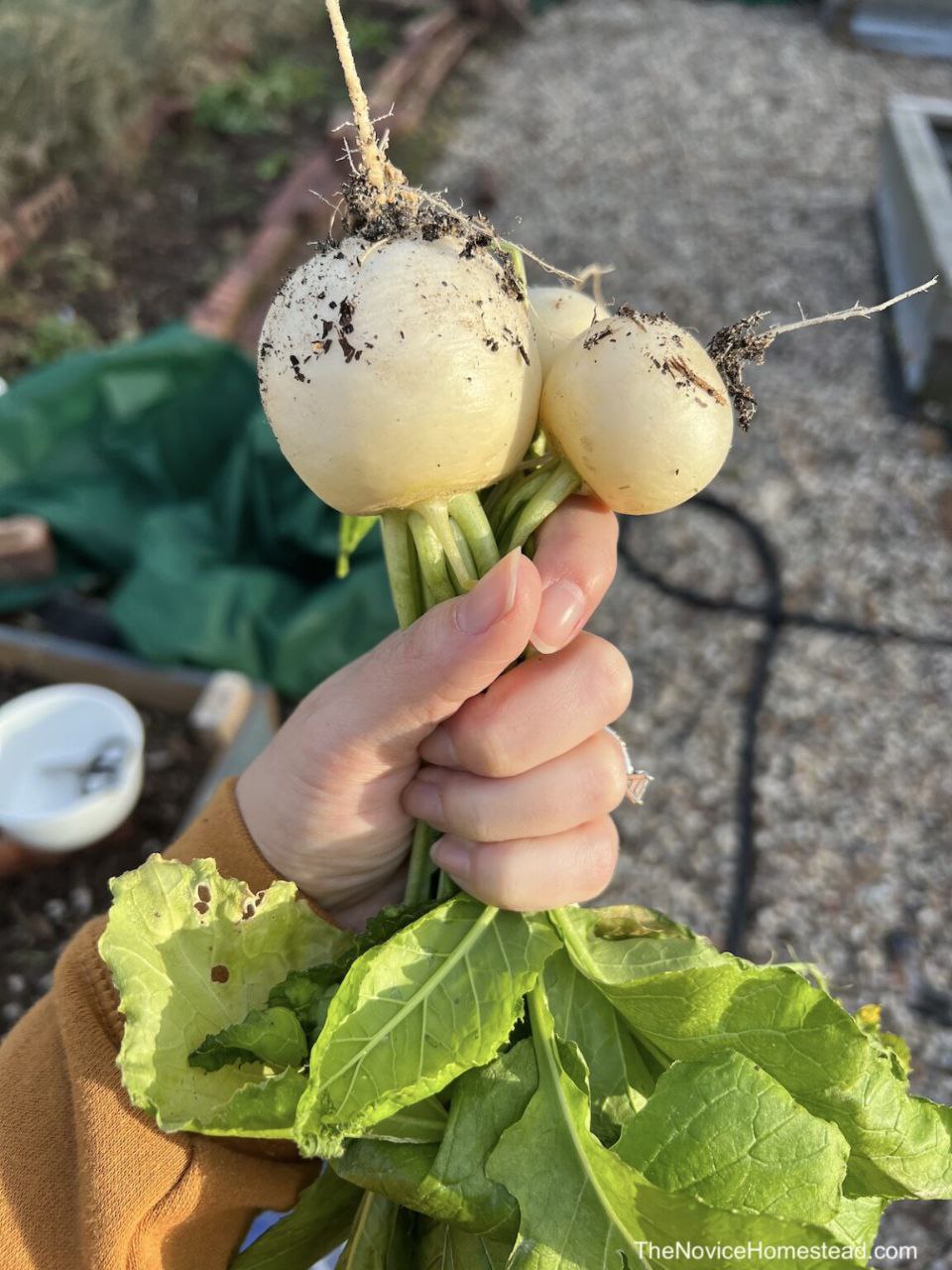 Source: The Novice Homestead
PIN IT
Source: The Novice Homestead
PIN IT
Turnips get a bad rap. Maybe it’s the name—let’s be honest, “turnip” doesn’t scream culinary excitement. But hear me out: fall-grown turnips are sweet, tender, and cook up like a dream. And if you’re still scarred from some boiled disaster at Grandma’s house, I promise—they deserve a second chance.
Fall is their moment. Cooler temps mellow out their flavor, and the greens? Don’t even think about tossing them—they’re basically spinach with a bit more edge. I plant mine in early fall and give them room to breathe. Crowding = tiny roots and leafy tantrums.
Varieties like ‘Hakurei’ are downright buttery when roasted. I once made mashed turnips and didn’t tell my family—they asked if it was Yukon gold. I said yes. I lied. Worth it.
8. Beets: Nature’s Way of Staining Everything You Love
Growing beets in fall is a full sensory experience: sweet earthy flavor, jewel-toned roots, and yes—permanently dyed fingers if you forget gloves. But I love them anyway. Beets actually prefer the chill, and their sugars develop beautifully in cool soil.
Plant seeds about 4–6 weeks before the first frost, and give them loose, fertile soil so they can do their underground thing. Thin them early—beets get petty when crowded and you’ll end up with stubby roots.
Pro move? Roast the beets, sauté the greens. You basically get two vegetables in one—like a BOGO, but edible. I always grow a mix of red and golden varieties for drama and flavor. Bonus: they store like champs, which means you can feel smug eating homegrown beets in December. Fancy.
9. Lettuce: Because Your Salad Deserves Fresh Fall Flair
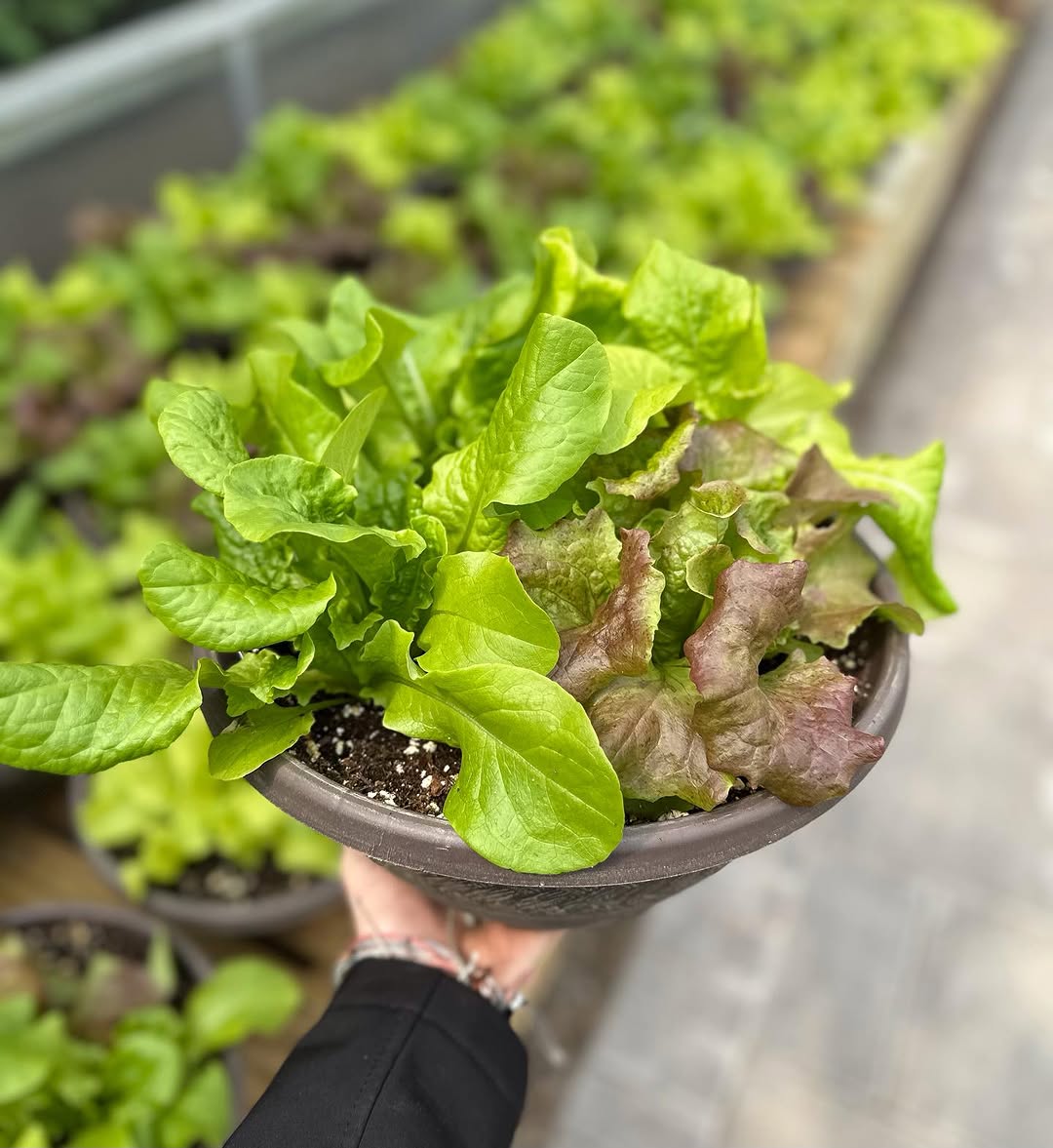 Source: @buchwaltergreenhouse
PIN IT
Source: @buchwaltergreenhouse
PIN IT
Here’s the thing—lettuce loves being chilly. It’s basically the opposite of me in winter. When summer heat makes it bolt faster than your ex dodging commitment, fall weather keeps lettuce cool, calm, and crispy.
Sow it in succession every couple of weeks so you’ve got a steady harvest of salad-worthy greens. Loose-leaf types like ‘Black Seeded Simpson’ and ‘Buttercrunch’ thrive in fall and give you a quick turnaround. Just don’t let them dry out—wilty lettuce is nobody’s friend.
I use mine in everything—from lazy wraps to sad desk lunches. And when it’s from your garden, even a basic salad feels kind of gourmet. Plus, pulling fresh lettuce from your backyard while everyone else is microwaving frozen pizza? Feels powerful.
10. Brussels Sprouts: The Late Bloomer That’s Worth the Wait
 Source: @forkinallotment
PIN IT
Source: @forkinallotment
PIN IT
Brussels sprouts are the slow-burning drama series of the fall garden. They take forever to grow—but the payoff is glorious. Cool temps make them sweeter and help them firm up into those tightly packed little green globes you either love or… pretend to love at family dinners.
Start them early (like, really early) or buy transplants in late summer if you’re running behind—no judgment. Give them room to grow and don’t rush the harvest. Wait until after a frost for the best flavor—they legit taste like they’ve been lightly glazed with sugar.
Yes, they’re a space hog. Yes, they look like little alien towers in your garden. But roasted with olive oil and a bit of balsamic? Absolute fall dinner royalty. Even the sprout skeptics at my table went back for seconds—and that’s saying something.
Bonus Round: Fall Garden Ideas That’ll Make You Feel Like a Pro
1. Formal Raised Beds + Gravel Paths = Organized and Aesthetic
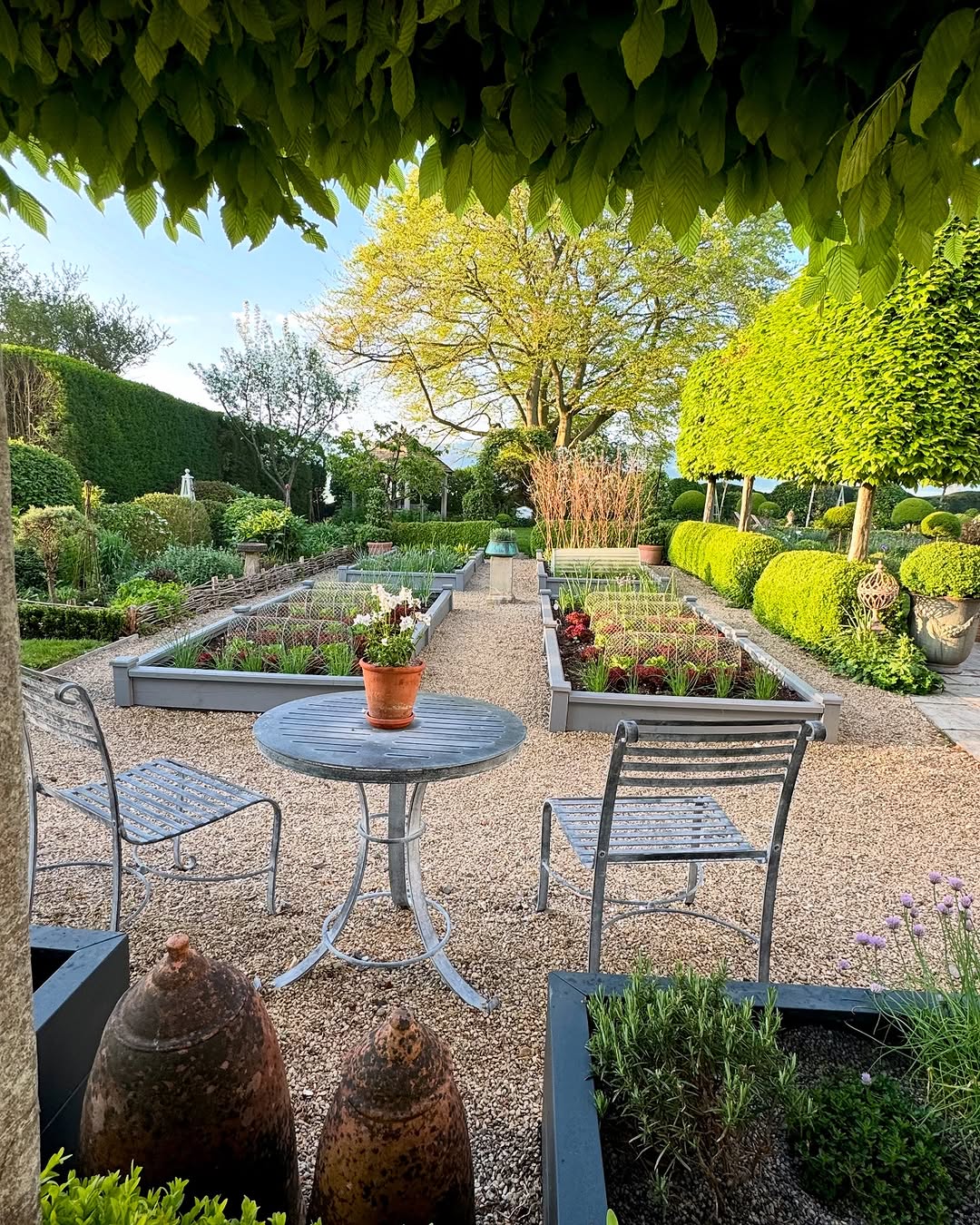 Source: @terrywinters9141
PIN IT
Source: @terrywinters9141
PIN IT
Okay, this is what happens when someone plans their fall garden with both Pinterest and practicality in mind. Raised beds? Check. Neat gravel paths? Check. A cute little bistro table to sip tea and pretend you’re not procrastinating weeding? Double check.
The layout in this garden is a masterclass in structured growing. Raised beds keep your soil warm longer in fall (hello, extended harvest!), and the defined layout makes crop rotation feel like less of a headache. Plus, gravel pathways = zero muddy boots—which, let’s be real, is a luxury in the wet fall months.
I also love how each bed is framed like a little exhibit of edible art. The symmetry makes the whole thing feel intentional, even if your planting strategy is “vibes only.” Add a few cloches or netting for frost protection and boom—you’re gardening like royalty.
2. Glass Greenhouse Glory + Gravel Chic = Fall Garden Goals
Okay, this layout? It’s giving main character energy in the best way. A sleek black-framed greenhouse as the centerpiece, flanked by symmetrical raised beds packed with crisp lettuce, bold beets, and fall’s favorite greens—it’s structured, stylish, and surprisingly down-to-earth.
What I love here is the intentionality. The gravel paths are not just pretty—they prevent muddy chaos during soggy autumn days. And the rows of terracotta herb pots? Chef’s kiss. They soften the lines of the layout while making rosemary feel like a design feature (because, let’s be honest, it is).
The greenhouse also acts as an autumn insurance policy—perfect for keeping seedlings warm, hardening off transplants, or even hiding from your to-do list with a cup of tea. This setup blends function with flair, proving your veggie patch can work hard and look fabulous doing it.
3. Let the Rain Work for You: Smart Water Flow Meets Fall Veggies
Now this is what I call letting Mother Nature chip in on the garden chores. This clever layout funnels rainwater straight from the roof down into the veggie beds—no hose-dragging, no guilt-watering during a drought, and definitely no “oops I forgot again” moments.
Here’s why this setup makes you look like you totally have your life together:
That gravel-lined trench isn’t just there for rustic vibes (although, let’s be honest, it is kinda cute). It’s a functional drainage system that guides water into the beds while keeping things tidy. Plus, it helps prevent root rot—because, unlike us, your cabbages don’t love soggy feet.
There’s something ridiculously satisfying about watching fresh rainwater trickle right into your lettuces and kale like it’s meant to be. It’s low-key genius, high-key aesthetic, and the kind of detail that makes other gardeners say, “Oh wow, you thought of that?”
Wrap-Up: Fall Gardening Is the Cozy Hobby You Didn’t Know You Needed
There’s something quietly magical about tending a garden as the air turns crisp and the leaves begin to fall. Fall gardening isn’t just productive—it’s soul-soothing. The textures, the colors, the rhythm of slowing down—it all feels deeply personal.
Whether you’re planting root veggies, styling your yard with rustic accents, or sipping cider in your garden swing, this season invites you to linger a little longer outdoors. Style tip: Don’t forget soft blankets and twinkle lights—it turns an ordinary harvest moment into a storybook scene. Fall gardening isn’t a chore; it’s a charming ritual in disguise.


